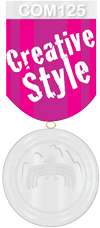

Since the time Michael started school he was never known to be a “very handsome” boy. He could never get a date and always ended up eating alone in the cafeteria. Michael used to despise the other guys who had everything, which in school consisted of popularity and of course, the girls.
“Friendster” had made its way to the high schools at this time and Michael was on top of it. He created a fool proof online identity, picking the best traits all the popular guys had and adding it to his profile. Using someone else’s picture and a whole lot of false attractive attributes he was able to become popular online and made a lot of friends in no time.
As you move around the internet, most of the people you encounter can't easily tell who you are. System operators and some technologically savvy, motivated users may be able to detect your e-mail or internet address, but for the most part people only know what you tell them about yourself. If you wish, you can keep your identity hidden. You can have no name - at least not your real name. Whatever you say or do can't be directly linked to the rest of your life. We don't have to own to our behavior by acknowledging it within the full context of who we "really" are (Suller, 2004).
Like my example of Michael many people choose to use a different identity altogether online. The anonymity that the Internet brings to us can be almost like a double edged sword. This may allow some people to share very personal things about themselves. They may reveal secret emotions, fears, wishes. Or they may show unusual acts of kindness and generosity. On the other hand, out spills rude language and harsh criticisms, anger, hatred and even threats. People are able explore the dark underworld of the internet, places of pornography and violence, places they would never visit in the real world, acknowledging their real identity (Suller, 2004).
An online identity is a social identity that network users establish in online communities. Although some people prefer to use their real names online, most Internet users prefer to identify themselves by means of pseudonyms, which reveal varying amounts of personally identifiable information (Online Identity, 2007).
When I was younger and new to the Internet, the game of harassing innocent victims online seemed exciting and the “in” thing to do. I recall many of my friends had created different online identities that were very diverse from their real life identities. Assuming the identity of a girl and finally having the last laugh at some poor guy was one of the all time favorites.
Since I don’t enjoy the trivial pleasures of harassing people anymore and mostly use the Internet for education or legal transactions and communication, I use my real name on my e-mail, IM’s and other virtual communities that I am a part of. “Hi5” and “Friendster” have helped me track down most of my old friends. Since the community usually consists of people that are acquainted to each other the use of fake identities are futile.
In these communities it is almost effortless for someone else to steal another’s identity; real or otherwise. The information that is portrayed on your profile is not secure and can be copied or stolen. Impersonation and concealing information are some of the many types of deception that occur with online identities (Donath, 1996).
While we contentedly display our pictures and information online, it is not precise to say that it is in safe hands. As we spend more time online, we are indirectly putting ourselves in danger of being robbed of our identity. Identity theft is the crime of the information age (Schneier, 2005). Although the law is gaining in on the pace of the development of technology, it is our identity that is out there and available for those online felons.
As mentioned in my first paragraph, Michael made many friends after joining “Friendster.” His profile may seem impressive, but that is not who he really is. His online identity is a collaboration of others peoples’ identities. It is always safe to stay vary of such people. After all, you don’t really know them!
“Friendster” had made its way to the high schools at this time and Michael was on top of it. He created a fool proof online identity, picking the best traits all the popular guys had and adding it to his profile. Using someone else’s picture and a whole lot of false attractive attributes he was able to become popular online and made a lot of friends in no time.
As you move around the internet, most of the people you encounter can't easily tell who you are. System operators and some technologically savvy, motivated users may be able to detect your e-mail or internet address, but for the most part people only know what you tell them about yourself. If you wish, you can keep your identity hidden. You can have no name - at least not your real name. Whatever you say or do can't be directly linked to the rest of your life. We don't have to own to our behavior by acknowledging it within the full context of who we "really" are (Suller, 2004).
Like my example of Michael many people choose to use a different identity altogether online. The anonymity that the Internet brings to us can be almost like a double edged sword. This may allow some people to share very personal things about themselves. They may reveal secret emotions, fears, wishes. Or they may show unusual acts of kindness and generosity. On the other hand, out spills rude language and harsh criticisms, anger, hatred and even threats. People are able explore the dark underworld of the internet, places of pornography and violence, places they would never visit in the real world, acknowledging their real identity (Suller, 2004).
An online identity is a social identity that network users establish in online communities. Although some people prefer to use their real names online, most Internet users prefer to identify themselves by means of pseudonyms, which reveal varying amounts of personally identifiable information (Online Identity, 2007).
When I was younger and new to the Internet, the game of harassing innocent victims online seemed exciting and the “in” thing to do. I recall many of my friends had created different online identities that were very diverse from their real life identities. Assuming the identity of a girl and finally having the last laugh at some poor guy was one of the all time favorites.
Since I don’t enjoy the trivial pleasures of harassing people anymore and mostly use the Internet for education or legal transactions and communication, I use my real name on my e-mail, IM’s and other virtual communities that I am a part of. “Hi5” and “Friendster” have helped me track down most of my old friends. Since the community usually consists of people that are acquainted to each other the use of fake identities are futile.
In these communities it is almost effortless for someone else to steal another’s identity; real or otherwise. The information that is portrayed on your profile is not secure and can be copied or stolen. Impersonation and concealing information are some of the many types of deception that occur with online identities (Donath, 1996).
While we contentedly display our pictures and information online, it is not precise to say that it is in safe hands. As we spend more time online, we are indirectly putting ourselves in danger of being robbed of our identity. Identity theft is the crime of the information age (Schneier, 2005). Although the law is gaining in on the pace of the development of technology, it is our identity that is out there and available for those online felons.
As mentioned in my first paragraph, Michael made many friends after joining “Friendster.” His profile may seem impressive, but that is not who he really is. His online identity is a collaboration of others peoples’ identities. It is always safe to stay vary of such people. After all, you don’t really know them!
References:
Donath, J. S. (1996). Identity and Deception in the Virtual Community. Retrieved February 23, 2007 from
Schneier, B. (2005, April 15). Schneier on Security. Retrieved February 23, 2007 from http://www.schneier.com/blog/archives/2005/04/mitigating_iden.html
Online identity (2007, February 15). In Wikipedia, The Free Encyclopedia. Retrieved February 23, 2007, from
Suller, J. (2004, June). The Online Disinhibition Effect. Journal of CyberPsychology and Behavior. 7 (3): 321-326. Retrieved February 23, 2007 from

1 comment:
Good creative exploration of identity manufacturing... picking of best traits as example. Actually there's another maxim which may disrupt this train of thought., that is "if it's too good to be true, it probably isn't". I'm talking about authenticity, how readers can sometimes decern when something's a little on the unreal side.
Anyway, good job there, full grade awarded. :)
Post a Comment